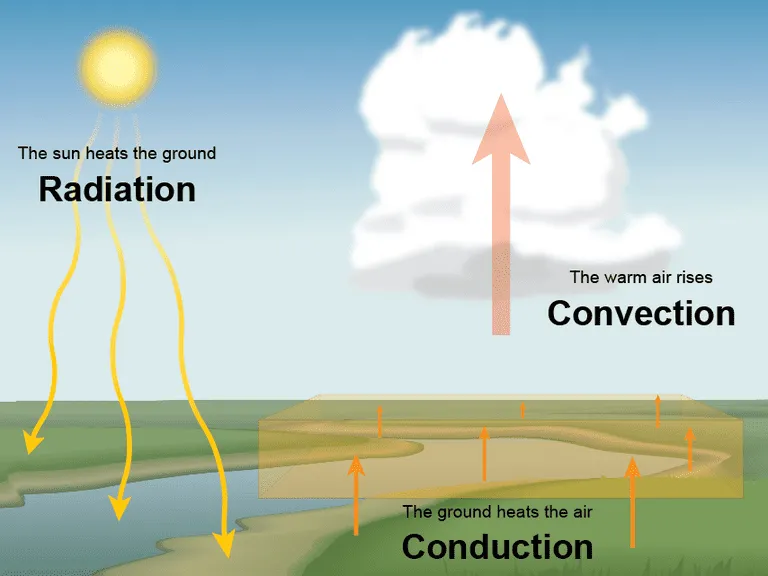Conduction

Energy is transferred between the Earth's surface and the atmosphere in a variety of ways, including radiation, conduction, and convection.
NOAA NWS
Conduction is one of the three main ways that heat energy moves from place to place. The other two ways heat moves around are radiation and convection. Conduction is the process by which heat energy is transmitted through collisions between neighboring atoms or molecules. Conduction occurs more readily in solids and liquids, where the particles are closer together than in gases, where particles are further apart. The rate of energy transfer by conduction is higher when there is a large temperature difference between the substances that are in contact.
Think of a frying pan set over an open camp stove. The fire's heat causes molecules in the pan to vibrate faster, making it hotter. These vibrating molecules collide with their neighboring molecules, making them also vibrate faster. As these molecules collide, thermal energy is transferred via conduction to the rest of the pan. If you've ever touched the metal handle of a hot pan without a potholder, you have first-hand experience with heat conduction!
Some solids, such as metals, are good heat conductors. Not surprisingly, many pots and pans have insulated handles. Air (a mixture of gases) and water are poor conductors of thermal energy. They are called insulators.
Conduction in the Atmosphere
Conduction, radiation, and convection all play a role in moving heat between Earth's surface and the atmosphere. Since air is a poor conductor, most energy transfer by conduction occurs right near Earth's surface. Conduction directly affects air temperature only a few centimeters into the atmosphere.
During the day, sunlight heats the ground, which in turn heats the air directly above it via conduction. At night, the ground cools and the heat flows from the warmer air directly above to the cooler ground via conduction.
On clear, sunny days with little or no wind, air temperature can be much higher right near the ground than slightly above it. Although sunlight warms the surface, heat flow from the surface to the air above is limited by the poor conductivity of air. A series of thermometers mounted at different heights above the ground would reveal that air temperature falls off rapidly with height.
© 2018 UCAR